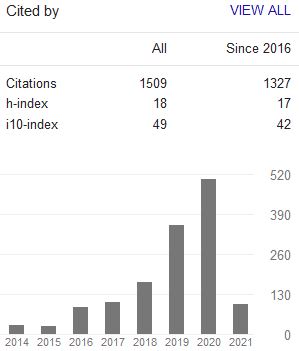SOCIO-STRUCTURAL INNOVATIONS IN INDONESIA’S URBAN SUFISM: The Case Study of the Majelis Dzikir and Shalawat Nurul Mustafa
Abstract
Sufi tradition has grown significantly in the modern Muslim world, including Indonesia. Currently, Sufism has been not only practiced by villagers, peasants, and non-educated people, but also practiced by urbanites, national elites, and educated people. Moreover, it has experienced significant innovation in terms of its practices and organization. This article takes an in-depth look at the innovationof Sufi tradition socially and structurally in Indonesia. It argues that majelis dzikir and shalawat in Indonesia, like Nurul Mustafa, has represented a new Sufi group that arises out of tarekat group, a group that has been considered as ‘official institution’ in implementing Sufism. The Majelis Nurul Mustafa has strong basis in urban society, rises from urban majelis taklim, introduces Sufi teaching to its jamā`ah that mostly urban teenagers and youths uses popular methods to attract the interest of those groups to attend its ritual as the complementary of its activity.
Keywords
Full Text:
PDFReferences
Anonymous. “Menebar Dakwah Dengan Mahabbah.” Majalah Kisah Islami Al-Kisah, 2011: pp. 49-55.
Al-Muhdhor, Yunus Ali. Mengenal Lebih Dekat al-Habib Abdullah bin Alawi al-Haddad: Kisah Hidup, Tutur Katanya dan Tarekatnya. Surabaya: Cahaya Ilmu Publisher,2010.
Azra, Azyumardi. Jaringan ‘ulamā Timur Tengah dan Kepulauan Nusantara Abad XVII dan XVIII. Bandung: Mizan, 1999.
Böttcher, Annabelle. “Religious Authority in Transnational Sufi Networks: Syaikh Nazhim Al-Qubrusi Al-Haqqani al-Naqsahbandi.” in Gudrun Kramer and Sabine Schimidtke (eds.). Speaking for Islam: Religious Authority in Muslim Societies. Leiden: Brill, 2006.
Dhofier, Zamakhsari. The Pesantren Tradition; The Role of the Kyai in the Maintenance of Traditional Islam in Java. Arizona: Program for Southeast Asian Studies, Arizona State University, 1999.
Jacobsen, Frode F. Hadrami Arabs in Present-day Indonesia: An Indonesia-oriented group with an Arab signature. London and New York: Routledge Taylor and Francis Group, 2009.
Howell, Julia Day. “Modernity and Islamic Spirituality in Indonesia’s new Sufi Networks.” Martin Van Bruinessen and Julia Day Howell (eds). Sufism and ‘The Modern’ in Islam. New York and London: IB Tauris, 2007.
----------. “Sufism and the Indonesian Islamic Revival.” The Journal of Asian Studies, 60, 3 (2001): pp.701-729.
Howell, Julia Day, M.A. Subandi, and Peter L. Nelson. “New Faces of Indonesian Sufism: A Demographic Profile of Tarekat Qadiriyah-Naqshabandiah, Pesantren Suralaya in 1990s.” Review of Indonesian and Malaysian Affairs, 35, 2 (2001): pp.33-60.
Al-Ishaqi, Muhammad Usman. Al-Khulashah al-Wafiyyah Fi al-Adab wa Kayfiyat al-Dzikir ‘Inda al-Sadat al-Qadiriyyah wa al-Naqshabandiyah. Surabaya: Al-Fitrah, n.d.
Gilsenan, Michael. Saint and Sufi in Modern Egypt: An Essay in the Sociology of Religion. Oxford: The Clarendon Press, 1973.
Trimingham, J, Spencer. The Sufi Orders in Islam. New York: Oxford University Press, 1973.
Zamhari, Arif. Rituals of Islamic Spirituality: A Study of Majelis Dhikr Groups in East Java. Canberra: ANU E-press, 2010.
DOI: 10.15642/JIIS.2013.7.1.119-144
Refbacks
- There are currently no refbacks.
Indexed by:
Journal of Indonesian Islam (ISSN 1978-6301 and E-ISSN 2355-6994) is published by the Postgraduate Program (PPs) and the Institute for the Study of Religion and Society (LSAS), State Islamic University (UIN) of Sunan Ampel Surabaya.
Journal of Indonesian Islam by http://jiis.uinsby.ac.id/index.php/JIIs/index is licensed under a Creative Commons Attribution-ShareAlike 4.0 International License.
Copyright ©2020 State Islamic University (UIN) of Sunan Ampel Surabaya. Powered by Public Knowledge Project OJS.







